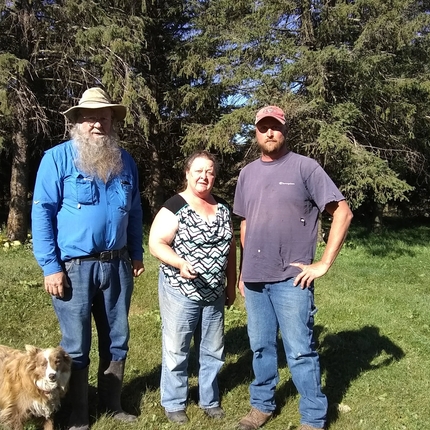By Andrea Hartman, former staff member
Bonnie Haugen believes the better she takes care of her part of the world, the better it is for herself and those around her.
Through the Conservation Stewardship Program (CSP), Bonnie, a dairy farmer in Canton, Minnesota, receives the financial and technical assistance she needs to achieve her conservation goals. She also experiences the benefits that come along with her efforts, which include improved soil health and water quality.
“The quality of our forage helps to capture water,” Bonnie said. “That means that rainfall doesn’t rush into our streams and lakes. This helps us with both water quality and water quantity.”
Administered by the U.S. Department of Agriculture’s Natural Resources Conservation Service (NRCS), CSP is one of the leading programs providing financial and technical assistance for producers to maintain agricultural production on their land, and simultaneously address resource concerns with conservation practices. CSP contracts are five years in length with the option to renew. In 2019, more than 160,000 acres were actively enrolled in the program in Minnesota.
Bonnie, who is in the middle of her third contract, remembers the early years of CSP, when she was managing the farm and her husband worked as an extension agent.
“It was nice to get paid and get recognition and encouragement for the practices we were doing,” she said.
A key component of her CSP contracts has been rotational grazing—also known as Advanced Grazing Management—which is the practice of containing and moving animals through a pasture to improve soil, plant, and animal health.
Oftentimes, rotational grazing is associated with ranching and the production of beef, but Bonnie uses the practice to feed her dairy cows. To avoid overgrazing, she has established a plan, and moves her cows between small paddocks for short periods of time. Since implementing the practice, Bonnie has noticed her forage has improved, which is a good indicator of soil health.
On their 230 acres, Bonnie and her husband have also high-tensile fence lining the perimeters, and have divided the pasture into strips and lanes. Depending on the soil and forage in that area, some strips are up to 14 acres, while others are less than an acre. Those strips are then divided further into paddocks with movable polywire, which offers the flexibility to accommodate different grazing strategies over time.
With assistance from other NRCS programs, such as the Environmental Quality Incentives Program, Bonnie was able to install additional fencing, which is an important tool in rotational grazing.
Bonnie has been doing rotational grazing for more than 25 years. As a way of helping the younger generation of famers learn about managing their own operation, she participates in the Dairy Grazing Apprenticeship program, which connects new dairy farmers with established master graziers.
“I’m lucky to be here,” Bonnie said. “Lucky to be born in the place I was born, to be raised by those who raised me, to live in a lovely part of the world.”
For farmers interested in boosting their conservation, Bonnie recommends focusing on how they take care of the soil.
“Whether it's no-till or keeping cover on the ground—every bit helps the soil, and helps financially,” she said. “After all, farming is everybody’s bread, butter, and water.”
The deadline to apply and submit initial paperwork is March 26. Interested producers should contact their local NRCS office as soon as possible.
Jessica Kochick with the Land Stewardship Project contributed to this article.
Feature photo: Bonnie Haugen, center, is pictured with her husband, Vance, and son, Olaf | Photo submitted





